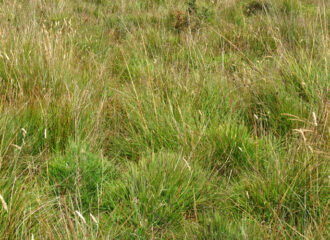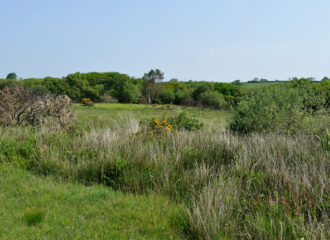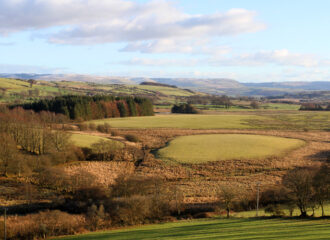Most damp pastures in Wales conform to three broad forms, grassland dominated by purple moor grass (Molinia caerulea), grasslands dominated by rushes (Juncus spp.) or grassland co-dominated by a mix of the two. The habitats can vary greatly both in structure and species-richness and are described in more detail under the sections below.
Damp pastures

Marshy grassland
Marshy grassland is typically dominated by a mix of purple moor grass (Molinia caerulea) and rushes (Juncus spp.). Under base-rich conditions, the habitat can be of European conservation importance, i.e. protected under Annex I of the EC Habitats Directive. And at locations where the vegetation has an open structure and an abundance of devil’s-bit scabious…

Rush pasture
Rush pastures are extremely variable, both in their appearance and in their associated biodiversity interest. They typically occur on neutral soils with the better examples having an open structure and being relatively species-rich. By contrast, and more typically, most rush pastures tend to comprise a mosaic of closely-cropped grasses and tussocks of rushes, which support…

Rough grazing pasture
These habitats are typically damp habitats dominated by tussocky purple moor grass (Molinia caerulea), rushes (Juncus spp.) or both. These are typically botanically species-poor, but in the uplands can provide cover for breeding wading birds such as lapwing (Vanellus vanellus), curlew (Numenius arquata), redshank (Tringa totanus) and snipe (Gallinago gallinago) – though this is increasingly…

